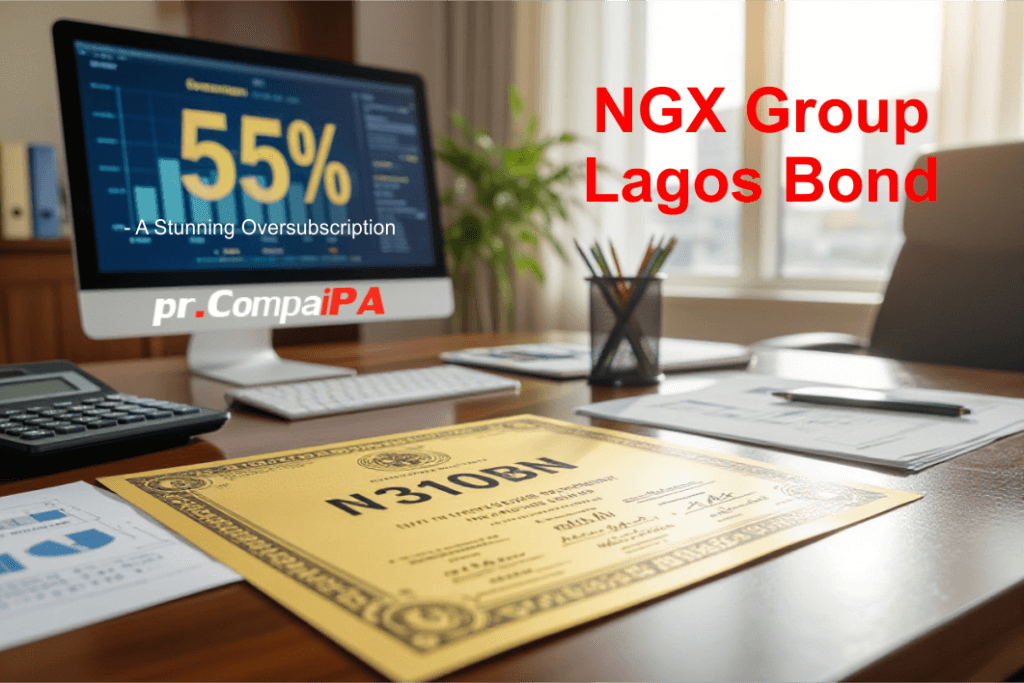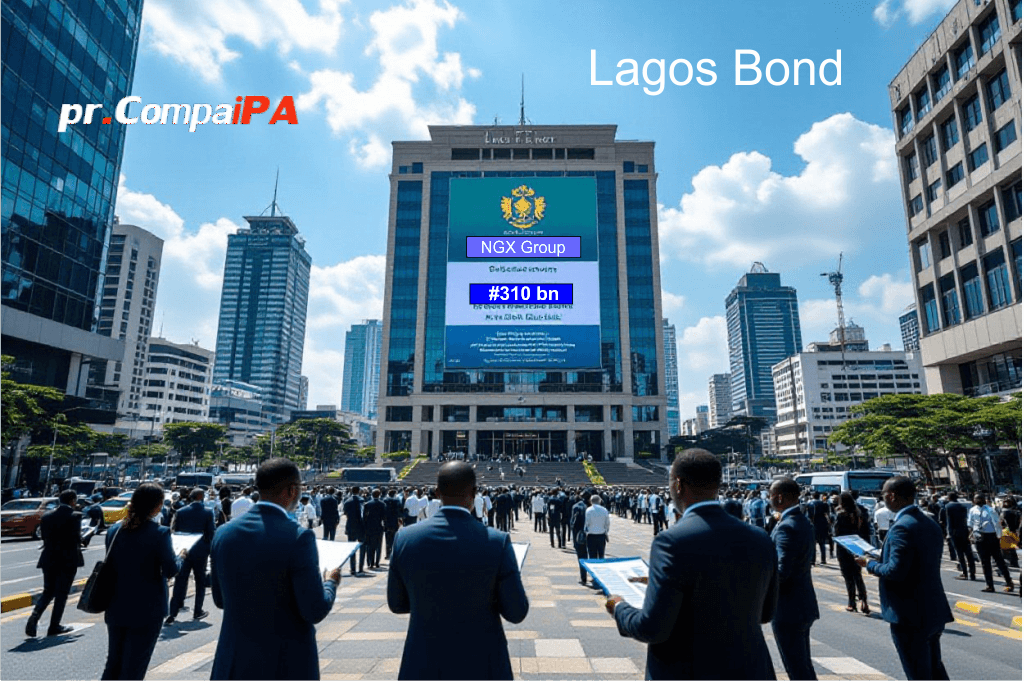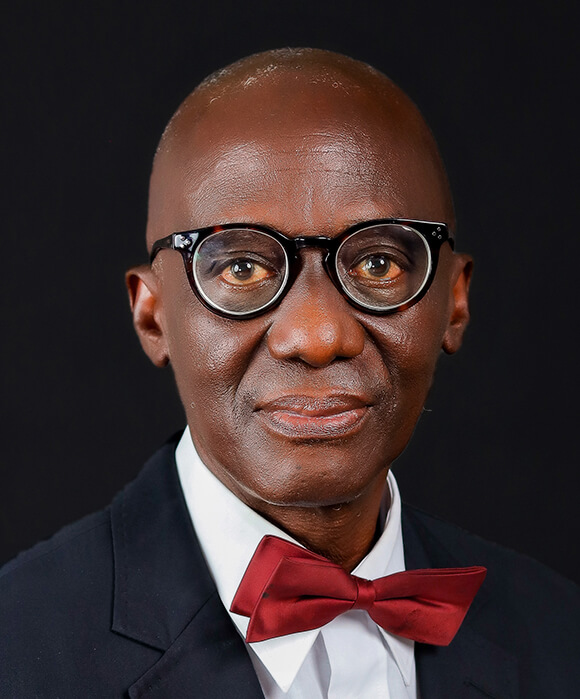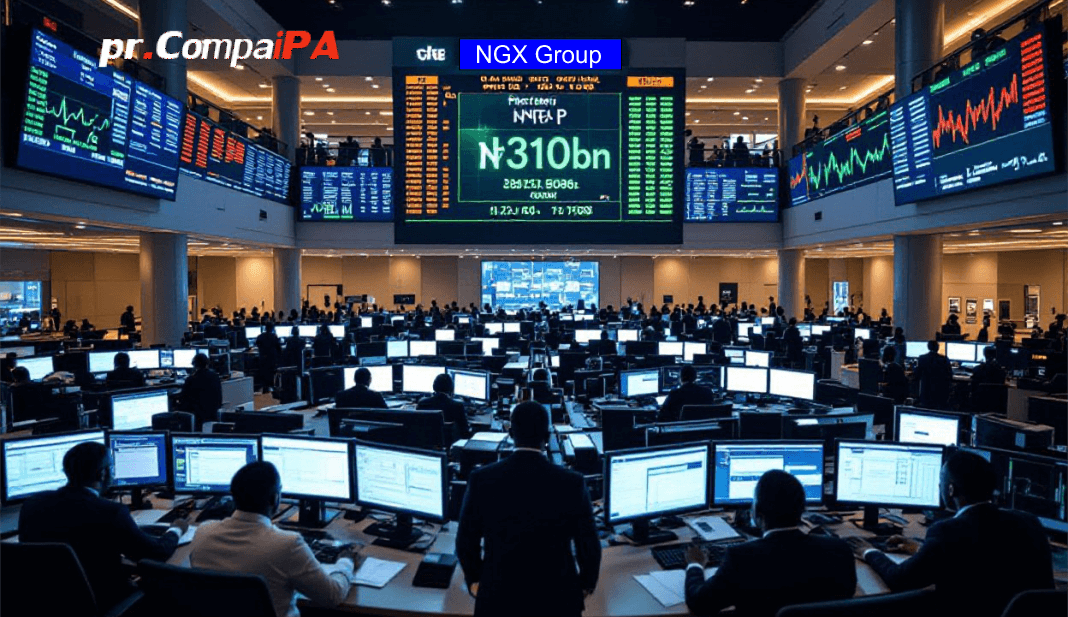Lagos Bond Issuance Reaches ₦310bn with A Stunning 55% Oversubscription
Lagos State, Nigeria, just pulled off a massive move in the debt market, but what does that really mean for you as an investor or observer of Nigeria’s economy? You’re looking at a bond issuance that hit ₦310bn with a stunning 55% oversubscription, and that kind of response doesn’t happen by accident; it screams strong investor confidence in the state’s long-term plans.

Key Takeaways:
- Compared to past Lagos Bond issuances, this ₦310bn bond feels like a level-up moment, signalling that the state can now pull really chunky funding from the market without scaring investors off.
- Instead of lukewarm interest, a 55% oversubscription screams demand – investors basically said “we want more of this paper” than Lagos even planned to sell.
- Against a backdrop of macro uncertainty, seeing this kind of appetite suggests investors trust Lagos’ revenue potential, especially its IGR strength and track record with previous bond repayments.
- Rather than being just a vanity headline, this bond size gives Lagos more real firepower for infrastructure – roads, transport, housing – the kind of stuff that can feed back into growth and, in turn, future debt service capacity.
- Compared with riskier state issuers, Lagos is quietly cementing a sort of blue-chip status in the Nigerian subnational bond space, and that perception can lower future borrowing costs over time.
- Instead of relying only on federal allocations or short-term bank loans, this move shows Lagos is deepening its access to long-term capital market funding, which is healthier for planning big-ticket projects.
- On a broader note, this level of oversubscription is a positive signal for Nigeria’s domestic debt market itself, because it shows local investors still have liquidity and are willing to back properly structured subnational deals.

What’s the Big Deal About Lagos’ ₦310bn Bond?
This isn’t just another state bond issue; it’s Lagos quietly telling you it has graduated into a different league of subnational finance. You’re looking at a ₦310bn Series I bond that pulled in a stunning 55% oversubscription, meaning investors tried to throw about ₦481bn at an offer that only needed ₦310bn. In a market where a lot of states struggle to close smaller books, Lagos is getting pension funds, insurance companies, asset managers, and foreign portfolio investors lining up because they see predictable cash flows, solid IGR above ₦50bn monthly, and a track record of actually meeting repayment obligations. That’s why this single transaction has pushed Lagos’ total bond programme capacity under the ongoing issuance shelf to well over the trillion-naira conversation space, and you don’t get invited into that room without serious financial discipline.
What makes it even more interesting for you as an observer (or a potential investor) is how this ₦310bn is positioned: it’s not random borrowing, it’s tied to infrastructure-heavy, revenue-linked projects like the Blue and Red Line rail expansions, road upgrades on key commercial corridors, and urban renewal that directly feeds back into land value and taxes. So the state isn’t just piling on debt, it’s trying to create a loop where every naira raised has a visible asset and a future cash stream backing it up – that’s exactly the type of structure big institutional investors screen for before touching a subnational Lagos bond. In practical terms, this deal signals to you that Lagos is increasingly able to fund long-term projects in naira, from its own capital market, instead of waiting on federal allocations or FX-denominated loans that can wreck your debt profile overnight when rates spike.
Why Everyone’s Talking About the 55% Lagos Bond Oversubscription
What really has the markets buzzing is that you didn’t just see this Lagos bond quietly fill up; you saw it attract 55% more orders than Lagos actually needed. In practical terms, that means if the state came out for ₦200bn, investors were ready to throw roughly ₦310bn at it, which is wild in a macro environment where a lot of issuers are struggling to get full subscription at all. You’re basically watching pension funds, insurance firms, asset managers, and even a few high-net-worth individuals line up saying, “we want exposure to Lagos paper”, and that kind of demand doesn’t happen if the market thinks your debt profile is shaky or your track record is suspect.
What you should really pay attention to is how this shapes your own investment playbook going forward. When a subnational like Lagos prices a bond and it gets heavily oversubscribed at the indicated yield, it tells you two things: one, institutional money believes the risk-return trade-off still works in spite of FX volatility and inflation, and two, liquidity in naira fixed income is deeper than the headlines make it sound. So if you’re allocating across FGN bonds, commercial paper, and state issuance, this kind of oversubscription is a quiet signal that credible issuers can still raise long-term naira at scale, which matters for your portfolio stability and for any long-term play you’re making on Nigeria’s infrastructure growth story.
My Take on Investor Confidence in Lagos Bond
Reading Between the Lines of That 55% Oversubscription
You don’t get a 55% oversubscription on a ₦200bn offer in a supposedly “risky” emerging market without something deeper going on under the hood. What you’re really seeing here is investors voting with their wallets that Lagos, with its over 20 million residents and roughly 30% contribution to Nigeria’s GDP, is still where growth lives, even with FX volatility, inflation, and political noise in the background. And that kind of conviction doesn’t come from vibes – it comes from models, credit committees, and risk teams that have stress-tested the state’s numbers to death.
When you have pension funds that typically lean very conservative, allocating size into this 10-year Series I and 7-year Series II paper at 15.25% and 15.75% coupons, what they’re basically telling you is: “We trust Lagos to outgrow the macro chaos.” You also see it in how fast the book built up, how institutional demand reportedly outstripped even the retail buzz, and how the state’s existing ₦1 trillion-plus debt stock didn’t scare them off. If anything, it signaled a borrower that has been tested in multiple cycles and still shows up to the market with a clear story, improving IGR, and a track record of not playing games with repayments.
Why You Should Care If You’re Thinking Long-Term
What’s wild is that, for you as an investor, this isn’t just about Lagos raising ₦310bn, it’s about proving that subnational stories can actually de-risk over time if they build a reputation for paying back on time and tying borrowings to visible projects. You’re watching a state that has consistently grown its internally generated revenue above ₦600bn annually walk into the market like a corporate issuer, using book-building, ratings, and structured tranches, which is exactly what gives institutional investors the comfort to pile in. That kind of discipline is what slowly compresses yields over multiple issuances, and quietly, that’s where you make decent fixed-income money if you position early.
From your angle, this level of confidence means two things: first, you’re likely to see more Lagos paper coming, with increasingly tighter pricing if performance stays solid, and second, other states are going to copy-paste this playbook, but not all of them will be able to pull it off. So if you’re building a long-term portfolio in naira, you’ll want to separate states that can actually show Lagos-style investor trust signals – things like audited accounts, stable debt service, transparent project pipelines – from those just chasing headline-sized bonds. Because in a market like this, confidence is a tradable asset all by itself.
The Real Deal About the State’s Financial Market Performance
Reading The Market’s Body Language
You know that moment when a supposedly “risky” state bond starts trading tighter than some corporate issues? That’s what you’re quietly seeing with Lagos – secondary market quotes on earlier tranches have been coming in at yields that signal one thing: investors think your default risk is low enough to live with, especially relative to the returns on offer. When, for instance, a ₦125 billion issuance pulls in over ₦310 billion in bids, it’s not a fluke; it’s the market’s version of body language saying, “we’ve run the numbers, and we like what we see.”
On top of that, you’ve got a track record backing it up: Lagos has repeatedly met its coupon obligations on the 2016, 2019, and 2020 series without drama, and that payment history is exactly what fixed-income desks plug into their models. So when yield spreads on Lagos paper start narrowing against FGN bonds of similar tenor, what you’re staring at is a re-pricing of risk – the market is quietly upgrading the state’s perceived credit quality, even before any rating agency puts out a glossy PDF to say the same thing.
What This Says About Fiscal Discipline And Depth
Another angle you can’t ignore is the discipline story behind those numbers, because investors definitely aren’t ignoring it. Lagos has moved its internally generated revenue from roughly ₦20-25 billion monthly a decade ago to well over ₦50-60 billion in recent years, and that growth is what gives fixed-income investors confidence that debt service to revenue ratios stay within manageable bands. In plain terms, your cash flow looks strong enough to handle more sophisticated borrowing without tipping into distress, and that is a big deal in a subnational market where many states struggle to cover salaries.
At the same time, you’re seeing a deeper, more liquid state-level curve forming: multiple Lagos series across 5-10 year tenors now trade often enough that local fund managers can actually price risk, hedge duration, and structure products around them. That sort of activity pulls in pension funds, insurers, even global frontier-market funds testing the waters, and each of those players adds another layer of confidence. So in practice, this single oversubscribed issuance is part of a longer pattern – Lagos is slowly turning its bond programme into a benchmark for subnational market performance in Nigeria, which quietly raises the bar for every other state that wants to tap the same pool of capital.
How Does This Compare to Other States?
Where Lagos Sits In The Subnational League Table
You’ve probably noticed a pattern lately – whenever subnationals tap the market, Lagos tends to grab the spotlight, and this ₦310bn issuance just turned the volume up. While your bond hit a 55% oversubscription, most other states are still playing in a very different league: Osun’s 2012 ₦11.4bn sukuk closed with modest participation, and Ekiti’s ₦25bn programme has had to rely heavily on bank-led pockets of demand rather than broad investor appetite. The contrast is pretty stark when you line up amounts, ratings, and investor mix side by side – Lagos looks less like a typical state issuer and more like a mid-tier corporate blue chip.
What really sets Lagos bond transactions apart is the combination of scale, pricing, and repeat-access track record. While a state like Akwa Ibom might structure something around the ₦20bn-₦30bn range and struggle to attract long-only institutional investors, Lagos pulled in PFAs, insurance firms, banks, and high-net-worth investors in one sweep, with enough depth to tighten pricing. And because Lagos has successfully issued multiple bonds over the last decade without default or restructuring drama, investors are basically signaling that, compared to most states, your name on a term sheet feels a lot closer to an investment-grade anchor name than a risky bet.
| State / Issuer | What This Means For You |
|---|---|
| Lagos – ₦310bn issuance, 55% oversubscribed | Operating at a scale other states haven’t matched, setting the tone for subnational pricing and structure. |
| Lagos – a long history of bond repayments without default | Track record gives investors comfort to roll over and upsize exposure, so it can tap the market more frequently. |
| Osun – ₦11.4bn sukuk (2012) with limited follow-on depth | Shows how smaller, one-off deals struggle to build a loyal investor base, something Lagos has already done better. |
| Ekiti / other mid-tier states with ₦20bn-₦30bn programmes | These typically relied on bank balance sheets, while Lagos attracted diverse institutional demand at tighter spreads. |
| Typical state bonds – lower issue sizes, slower bookbuilds | Benefit from faster book coverage, which improves pricing power and positions Lagos as a benchmark reference. |
| States with weaker IGR and FGN allocation dependence | Stronger IGR profile means investors see better cash flow visibility and lower repayment anxiety. |
What’s Next for Lagos and its Investors?
Short-Term Moves: Pricing, Liquidity, and Next Allocation
The next big decision isn’t whether Lagos will come back to the bond market; it’s how you position yourself before it does. With a 55% oversubscription on a ₦310bn issuance, you should expect tighter pricing on future Lagos paper, especially if the state keeps a clean repayment record on existing series. That kind of demand typically gives an issuer confidence to shave a few basis points off future coupons, so if you’re waiting for “higher yields later”, you might actually be waiting for a train that’s already leaving the station.
On the secondary market side, you could see stronger liquidity and lower bid-ask spreads as more institutional players load up and trade this paper more actively. Pension funds, insurance companies, and PFAs that missed out in the primary auction are likely to show up quietly in the secondary market, hunting size blocks. So if you’re already in, you may find it easier to offload or rebalance your position without giving up much on price. And if Lagos swiftly publishes clear, project-linked quarterly reports on how this bond is deployed, that transparency alone can trigger more buy-side inquiries than any roadshow.
Longer-Term Plays: Project Delivery, Ratings, and Your Portfolio Strategy
Where this really gets interesting for you is the compounding effect if Lagos actually executes. Funds are being tied to infrastructure, transportation, healthcare, and urban renewal projects that, if delivered on time, could enhance the state’s revenue profile over the next 5-10 years. Better roads mean lower logistics costs, improved land values, and more business activity that feeds into internally generated revenue, which then feeds back into better debt service metrics and potentially tighter credit spreads for you on future issues.
Over that horizon, you should be watching three things like a hawk: project completion rates vs. timelines, Lagos’ debt service to revenue ratio, and any moves from ratings agencies. A positive ratings outlook or upgrade on the back of strong execution could reprice Lagos risk overnight and pull in more offshore interest, especially from Africa-focused EM funds that love a yield pick-up with a reform story. For your portfolio, that might mean shifting from a one-off position in this bond to a more deliberate Lagos exposure strategy – laddering across maturities, combining bonds with Lagos-linked equities or infrastructure funds, and using this issuance as your entry point into a longer, more structured play on the state’s growth story.
Final Words: Lagos Bond
Considering all points, you have to ask yourself a simple question: what does a ₦310bn bond issuance with 55% oversubscription really say about your market? It tells you that investors are not just casually interested; they’re lining up to put their money behind Lagos, and by extension, behind the broader growth story you’re watching unfold. For you, that kind of appetite signals deeper liquidity, better pricing benchmarks, and more sophisticated capital flows that can shape how you think about risk, returns, and long-term positioning.
When you step back, you’re not just looking at a successful transaction, you’re seeing a clear vote of confidence in the state’s economic narrative and your market’s capacity to absorb large, structured deals. It sets a reference point for future issuances you’ll be tracking, raises the bar for transparency and performance, and quietly shifts expectations about what’s possible in subnational financing.
FAQ: Lagos Bond
Q: What does it actually mean that Lagos bond issuance hit ₦310bn with 55% oversubscription?
A: Picture a room where the government is offering ₦310bn in bonds, and investors walk in with cash worth almost half as much again, all trying to grab a slice. That’s basically what a 55% oversubscription means – investors wanted about 55% more than what Lagos put on the table.
In simple terms, Lagos went to the debt market asking to raise ₦310bn, and demand was way higher than the offer. That level of interest usually signals that investors see the state as relatively stable, its projects as promising, and the returns as worth the risk they’re taking.
It also tells you something about liquidity in the Nigerian financial market right now – there’s money looking for solid instruments. When a Lagos bond gets oversubscribed, it often becomes a kind of reference point for future subnational issuances.
Q: Why is this bond oversubscription seen as a sign of strong investor confidence in Lagos?
A: Investors aren’t sentimental, they’re practical – they put money where they think they’ll get paid back with a decent return. So when that many investors line up for Lagos bonds, they’re basically voting with their wallets.
The confidence comes from a mix of factors: Lagos has a relatively strong internally generated revenue base, a track record of tapping capital markets, and a reputation for big infrastructure projects that can drive future growth. All of that feeds into investors’ perception that the state can service its debt without drama.
Also, in a market where default risk is always on investors’ minds, an oversubscribed subnational issue hints that credit analysts, fund managers, and institutional players have done their homework and are comfortable with Lagos’ numbers. That kind of sentiment doesn’t show up in press releases; it shows up in subscription books.
Q: How does this ₦310bn bond fit into Lagos State’s broader financial and development strategy?
A: If you’ve followed Lagos over the past decade, you’ll notice a pattern: heavy reliance on capital market funding to bridge infrastructure gaps. This bond is basically the latest chapter in that playbook, not some random one-off.
The funds typically go into roads, transport systems, housing, health facilities, power-related projects, and other backbone infrastructure that the annual budget alone can’t comfortably handle. By using bonds, Lagos spreads the cost of these projects over time, instead of trying to squeeze everything into current revenue.
It also reinforces Lagos’ image as a market-savvy subnational that understands how to use debt as a development tool, not just a cash plug. When done properly, that strategy can actually deepen the state’s financial markets and attract even more sophisticated investors over time.
Q: What does this oversubscribed Lagos bond say about Nigeria’s subnational financial market performance?
A: In a lot of emerging markets, subnational bonds can be a bit of a hard sell; people worry about governance, transparency, and repayment. So when a state like Lagos pulls off a heavily oversubscribed issuance, it’s a signal that the subnational debt market is maturing, at least at the top tier.
It shows that investors are willing to differentiate between states based on fiscal discipline, revenue strength, and credible project pipelines, instead of treating every issuer the same. That’s how real markets work – with pricing and demand reflecting perceived quality.
Plus, it sets a performance benchmark for other states that might want to tap the bond market. If they want a similar reception, they’ll need better balance sheets, clearer development plans, and more transparent financial reporting.
Q: How might this Lagos bond affect everyday residents of Lagos in practical terms?
A: You probably won’t wake up tomorrow and see “Bond Impact” written on the road, but you’ll feel it indirectly over time. These funds usually feed into tangible stuff – like upgraded transport corridors, improved drainage, new schools or hospitals, and urban renewal projects.
Of course, there’s a flip side: bonds are debt, and debt has to be repaid, often from future revenues like taxes, levies, and charges. So residents benefit from better infrastructure but also share in the responsibility for repayment through the government’s fiscal policies.
The real test for citizens is whether the projects financed by this ₦310bn actually improve the quality of life and economic opportunity enough to justify taking on that level of debt. If execution is solid, the long-term payoff can outweigh the cost.
Q: What risks do investors consider when buying Lagos bonds, even with strong demand?
A: High demand doesn’t magically erase risk; it just means investors think the balance of risk and return makes sense. They still worry about things like revenue volatility, political transitions, policy consistency, and broader macro issues like inflation and currency pressure.
Investors also look closely at Lagos’ debt profile: how much debt is already on the books, what the repayment schedule looks like, and whether debt service starts to crowd out other spending. If debt service gets too heavy relative to revenue, that raises red flags.
And there are execution risks too – if the projects funded by the bond get delayed, poorly managed, or politicized, the economic benefits that were supposed to support future repayments might not materialize as planned. So confidence doesn’t mean blind faith; it just means calculated risk-taking.
Q: Could this successful issuance influence future bond offerings by Lagos or other states?
A: Absolutely, big deals like this tend to have a ripple effect in the market. For Lagos, a successful ₦310bn issuance with 55% oversubscription creates a strong precedent, making it easier to come back to the market later with new tranches or different tenors.
Other states are watching, too, no doubt. Some will try to replicate the model, but they’ll quickly find that investors don’t just copy-paste their enthusiasm – they want similar governance standards, financial discipline, and credible plans before they commit serious capital.
Over time, if more subnationals raise money successfully and manage it well, you get deeper local capital markets, more diversified funding options, and less dependence on short-term bank borrowing. That’s where this Lagos deal could quietly reshape behavior far beyond just one issuance.
To broaden your understanding, check out this companion article covering similar developments.
Kick-start your tailored Financial PR campaign today—elevate your visibility, strengthen credibility, and shape the narrative before others do. Fill out your choice campaign that fits your financial PR strategic direction –
Brand Brief PR Campaign Plan Form
Financial PR Narrative, Amplified Form, and
The Corporate Intelligence Exchange Newsroom Form
Act Now!

Expertly crafted to deliver clear, competitive economic insights for a wider audience, this article is authored by Adebola Adeola, CEO of Dinet Comms and PR CompaiPA.




